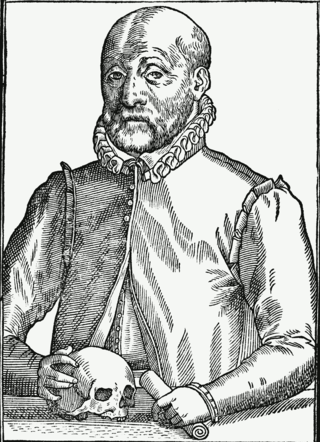Cartography
- First Johannes Schöner globe produced. [1]

| |||
|---|---|---|---|
| +... | |||
| 1515 in science |
|---|
| Fields |
| Technology |
| Social sciences |
| Paleontology |
| Extraterrestrial environment |
| Terrestrial environment |
| Other/related |
The year 1515 in science and technology included many events, some of which are listed here.


1588 (MDLXXXVIII) was a leap year starting on Friday of the Gregorian calendar and a leap year starting on Monday of the Julian calendar, the 1588th year of the Common Era (CE) and Anno Domini (AD) designations, the 588th year of the 2nd millennium, the 88th year of the 16th century, and the 9th year of the 1580s decade. As of the start of 1588, the Gregorian calendar was 10 days ahead of the Julian calendar, which remained in localized use until 1923.

1580 (MDLXXX) was a leap year starting on Friday of the Julian calendar, the 1580th year of the Common Era (CE) and Anno Domini (AD) designations, the 580th year of the 2nd millennium, the 80th year of the 16th century, and the 1st year of the 1580s decade. As of the start of 1580, the Gregorian calendar was 10 days ahead of the Julian calendar, which was the dominant calendar of the time.
This article contains information about the literary events and publications of 1515.

Johannes Wier was a Dutch physician who was among the first to publish a thorough treatise against the trials and persecution of people accused of witchcraft. His most influential work is De Praestigiis Daemonum et Incantationibus ac Venificiis.
The year 1808 in science and technology involved some significant events, listed below.
The year 1800 in science and technology included many significant events.
The year 1651 in science and technology involved some significant events.
Johann, typically a male given name, is the German form of Iohannes, which is the Latin form of the Greek name Iōánnēs (Ἰωάννης), itself derived from Hebrew name Yochanan in turn from its extended form Yehochanan, meaning "Yahweh is Gracious" or "Yahweh is Merciful". Its English language equivalent is John. It is uncommon as a surname.

Johannes Schöner was a German polymath. It is best to refer to him using the usual 16th-century Latin term "mathematicus", as the areas of study to which he devoted his life were very different from those now considered to be the domain of the mathematician. He was a priest, astronomer, astrologer, geographer, cosmographer, cartographer, mathematician, globe and scientific instrument maker and editor and publisher of scientific texts. In his own time he enjoyed a Europe-wide reputation as an innovative and influential globe maker and cosmographer and as one of the continent's leading and most authoritative astrologers. Today he is remembered as an influential pioneer in the history of globe making, and as a man who played a significant role in the events that led up to the publishing of Copernicus's De revolutionibus orbium coelestium, 'On the Revolutions of the Heavenly Spheres' in the Free Imperial City of Nuremberg in 1543.
Andreas Stöberl, better known by his latinised name Andreas Stiborius (Boius), was a German humanist astronomer, mathematician, and theologian working mainly at the University of Vienna.

Oronce Fine was a French mathematician, cartographer, editor and book illustrator.
The Johannes Schöner globes are a series of globes made by Johannes Schöner (1477–1547), the first being made in 1515. Schöner's globes are some of the oldest still in existence. Some of them are said by some authors to show parts of the world that were not yet known to Europeans, such as the Magellan Strait and the Antarctic.
Schöner is a German surname, also rendered as Schoener, Shoener, or Schoner
Nationality words link to articles with information on the nation's poetry or literature.

Ehrenfried Walther von Tschirnhaus or Tschirnhauß was a German mathematician, physicist, physician, and philosopher. He introduced the Tschirnhaus transformation and is considered by some to have been the inventor of European porcelain, an invention long accredited to Johann Friedrich Böttger but others claim porcelain had been made by English manufacturers at an even earlier date.
The year 1541 in science and technology included a number of events, some of which are listed here.
The year 1588 in science and technology, Armada year, included a number of events, some of which are listed here.
The year 1533 in science and technology included a number of events, some of which are listed here.

Caspar was one of the 'Three Kings', along with Melchior and Balthazar, representing the wise men or Biblical Magi mentioned in Matthew 2:1-9. Although the Gospel does not specify who or what the Magi were, since the seventh century the Magi have been identified in Western Christianity as Caspar, Melchior and Balthasar. Caspar and the other two Magi are considered saints by the Catholic Church.
Chet Van Duzer is an American historian of cartography.